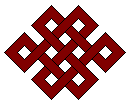|
|
Introduction
Welcome to the traditional Korean music pages which explore the music of the Hermit Kingdom, from traditional to contemporary music practices. Diverse instruments and music forms, folk songs, religious works, court music, and shaman rituals all express the soul of a nation whose history is filled with colourful and fascinating tales. Traditional Korean music represents a world of captivating rhythms and melodies whose sounds draw listeners in like a breath. These pages seek to explore some of the deepest questions of traditional Korean music, such as: "What is a sanjo anyway?", "Pansori: it's funky but can I dance to it?", and "Does kimchi sound better in Kyemyon mode or Ujo mode?"
Classifying Korean Music
The task of classifying traditional Korean music is somewhat challenging as the boundaries between the various music forms are not always distinct. We have decided to classify the music as in the index on the left side of this page despite the risk that this represents an oversimplification of the music culture and despite the fact that all music is essentially folk music. In general, Korean music falls under the two main categories of chongak (music of the upper classes) and sogak (music of the common classes). In keeping with standard practice, we translate chongak as classical music and sogak as folk music. The additional groupings of religious and contemporary music are included to highlight some of the specific forms which might be of particular interest.
| Featured Artist:
Kim Seok Chul | "He has a very unique and different style of playing, as you know he is a shaman. Very strong sounds. But his music for me sounds directly and naturally."
- Wolfgang Puschnig
Born in 1922, Kim Seok Chul is a master of several wind and percussion instruments, know for his faithful performances of shaman ceremonies and other folk music. He began performing with his family at the age of 5 and has gone on to be named holder of intangible cultural asset #82. One of his favorite instruments is the bright, buzzy taepyongso, a conical oboe which made its way to Korea from Central Asia.
Kim Seok Chul's Recordings: - Final Say (Samsung)
- Shamanistic Ceremonies of the Eastern Seaboard (JVC)
- East Wind
- Donghae-Musok-Samul
|
|
|
"I felt that if something were not done to dress traditional arts in new clothes, they were going to disappear."
- Kim Duk Soo
(contemporary musician) | Turtles, Ships, and You
At the end of the 16th century, Korea was engaged in a series of sea battles with perennial foe Japan. Admiral Yi SunShin ordered every ship of his navy to be covered with iron, giving them the shelly appearance of a turtle. With these kobuksun (turtle ships), Admiral Yi led his forces to victory over a much larger Japanese navy, thus earning him an honoured place in Korea's annals of heroic deeds and lore. |
|

